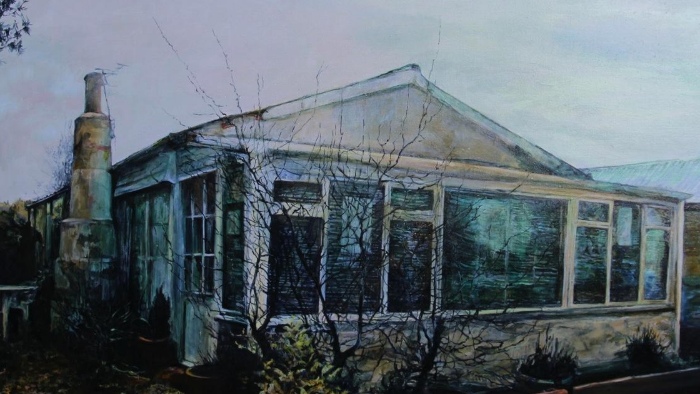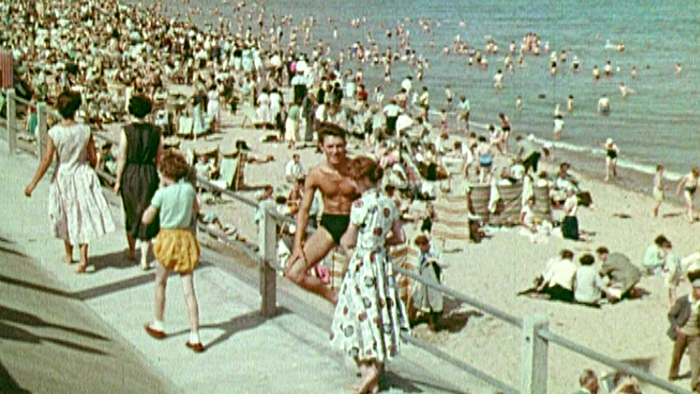I’ve always been interested in experimental techniques of poetry. As an ecopoet I use the whole space of the page, using language inventively to make people think again and question their assumptions about the environment we share. I have worked in this field for thirty years, and have coined the term Radical Landscape Poetry.
For the last decade or so, I have worked with the artist and academic Dr Judith Tucker from the University of Leeds. Judith creates pencil drawings and paintings and I write poetry. Our work is created together and designed to be displayed together.
A typical project will see us visiting a particular place over a long period of time, walking in its countryside and experiencing its wildlife and plantlife. Equally importantly, we speak to the people who live there.
It’s all about feelings — people's feelings about their place. You can't truly understand a place or its history without understanding the people. The environment and the culture of a place are intertwined.
In 2013 we embarked on a new project about the Humberston Fitties, a plotland of chalets in North East Lincolnshire. Over the following years, this project would lead to extensive public debate about the environment and its local context.
One of our last remaining plotlands
Back in the first half of the 20th century, you would find plotlands all around the British coast. They were a bit like a static caravan site, except that instead of caravans you bought a patch of land and built what you liked on it, often out of recycled materials left over from the war. In recent times plotlands have fallen out of favour, and many have closed down.
The Humberston Fitties near Cleethorpes in North East Lincolnshire is one plotland that continues to be a strong community. It contains around 350 chalets, all with their own unique aesthetics.
The chalets are owned by a mix of really interesting people. Most have decided to live a simple life on the coast; others just take their holidays there. They love the environment and the landscape, and that’s no surprise — there are vast, beautiful beaches, estuaries, flat landscapes, and it’s a Site of Special Scientific Interest for its amazing birds.
The Fitties are also the subject of several environmental debates. The whole of the east coast, including the Cleethorpes area, is liable to flooding and in need of flood defence. Salt marsh can help as a soft defence against flood, but some local people would rather preserve the sandy beaches than let the salt marsh reestablish itself. It’s often seen as a sand versus mud debate!
Since 2016, when the site was sold to a private company, the people of the Fitties have also worried that their way of life might be under threat. It is vital that everyone concerned pulls together to protect the heritage and environment of this plotland and its surroundings.
How we worked
The way we make art is to make a connection with people. In the Fitties we delivered postcards to every chalet and asked people to write down their memories of the place. We also set up stalls on the beach to talk to people.
I also carried out longer interviews with some chalet owners. People like to talk about their area. They'll drag out their aged aunts and grannies who love speaking to someone who is interested in what they have to say.
Some of the older people could remember the times of gas lamps and fetching water in buckets. For many of them, if was a long-held ambition to have a chalet there, and they had saved up
all their life for it.
From our many visits and conversations, Judith and I created collaborative paintings and poems for exhibition. It was also made into a book called Neverends — which is the name of one of the chalets. We wanted people to be able to take something away from the exhibition.
My poetry in the collection includes landscape poetry and found words from the voices of the chalet owners, their memories, and the way they feel about the plotland.
We launched Neverends at the launch of the exhibition near the Fitties, where many of the chalet owners were present, along with local historian Alan Dowling, who wrote a book about the history of the Fitties. It felt like he was passing the baton of documenting the Fitties on to us, which was very moving.
Since then it has been exhibited all around the UK and as far afield as Yantai in China and Gdansk in Poland.






